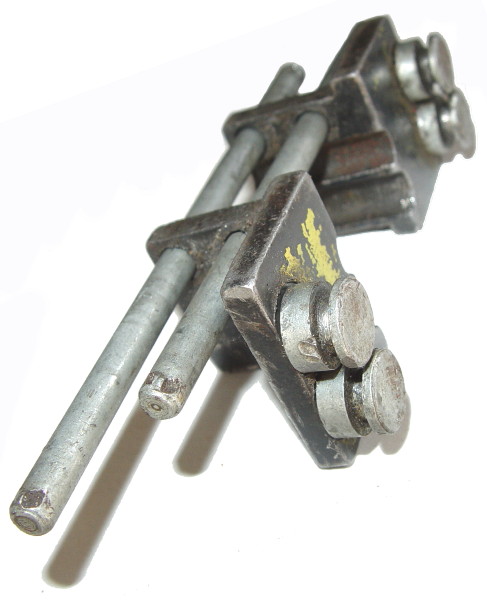Name That TOOL #14
by Bikeman • September 15, 2023
This was as much fun as the Attic What IZIT used to be back in the early days of the internet. Being an ol' fashioned bike shop since the 70's, we've seen a lot of technology and "standards" come and go. As a result we have a lot of mostly outdated tools around the shop. For this contest we'd dig out an old tool and put it out to our visitors to identify. Much like we are posting reruns of the What IZIT we'll try to dust off one of these gems every week or so for a walk down memory lane.

Originally Published early in this century
A vintage tool from the depths of Bikeman's tool box. No longer in regular service but a great tool to have in the quiver. We are looking for the tool Manufacturer as well as functionality. Creativity always breaks a tie and a story of personal experience with the tool could win you the prize.
A clear cut winner is named!
An interesting tool that brought some very good answers. As always only one can win and this time there is really only one choice. Here are the runner ups and of course the winner:.
WINNER - mtbr-0019
"Why, that would be a SunTour freewheel vise, used to hold the large sprocket of a freewheel (removed from the bike) while turning a smaller sprocket to remove it. You hope. The real story was NOT using it, in which case grabbing two sprockets at the same time with two chain whips led to flailing around and eventually putting the freewheel back on to a wheel to hold at least one of the three things steady. The need for the freewheel (de)vise was substantially reduced even before the freehub, as makers went to more and more splined slide-on sprockets -- the smallest sprockets still self-tightened but with much less torque due to smaller diameter and because they were often driven only from the big ring. I never understood why makers stuck with the shallow-pitch thread instead of switching to something coarser -- which would self-tighten much less. I suspect the original motivation for that pitch was it was the same as hub threads, which in turn were chosen in about 1890 when fixed-gears were common and a shallow thread had the advantage it didn't self-unscrew as often during braking. Well, Maillard tried with the Helicomatic, but I think they changed too many things at once in an era when people were often dubious about new products. So the freewheel vise was a good tool for the day. If only SunTour had gone to a spline freewheel remover instead of the awful self-destructing two-prong and four-prong removers. Way too many SunTour freewheels went to their grave prematurely because of it."
RUNNER UP - Greg Blanco
"That thing appears to be a Suntour freewheel and hub vise. It goes in a bench vise...the little round things allow you to clamp a freewheel cog to work on the freewheel...the round grooves in the center part allow you to clamp an axle while disassembling or adjusting a hub. This thing is actually pretty useful."
RUNNER UP - Cleave Law
"Back in the day, you would use this tool with a vice on a workbench to disassemble your freewheel. You would lay the largest cog of the freewheel in between the pegs and put the flanges on the bottom of the tool into a vice. Tighten the vice -- but not too tight -- and use a single chain tool to remove the smallest cog. A lot easier on the knuckles than using two chain tools against each other while the freewheel was on the wheel."
RUNNER UP - Larry Browning
"Its a Suntour sprocket & axle vise. TA120"
RUNNER UP - Rich Koehl
"I can't be certain of the manufacturer but I am going to go with Hozan since they make some of the better axle vises of history. That however, is not just an axle vise, it is a freewheel vise. The four silver pins were the most often used part of that tool. The black clamping sides are clamped in a standard bench vise and slide along the parallel rods for alignment. The four silver pins which are 1/2" apart clamp into the teeth on the largest cog of a 5,6 or 7 speed freewheel to allow the mechanic to use a chainwhip to remove the lock ring, then you could replace individual worn cogs or stack cogs appropriate to the terrain. The half circles machined in the center of the tool could be used as an axle vise. One of my more memorable moments as a shop wrench was meeting Jobst Brandt. He came into a store I was working at in San Carlos, CA looking for a Suntour B-6 cog. It was 1998 and he was still running a 6 speed freewheel because it built a stronger wheel with less dish."
RUNNER UP - Stephen Keene
"Tool is used to adapt a bench vice to hold a freewheel by grasping the teeth on one of the sprockets. So, I would call it a 'freewheel vice adapter.' I want one!"
